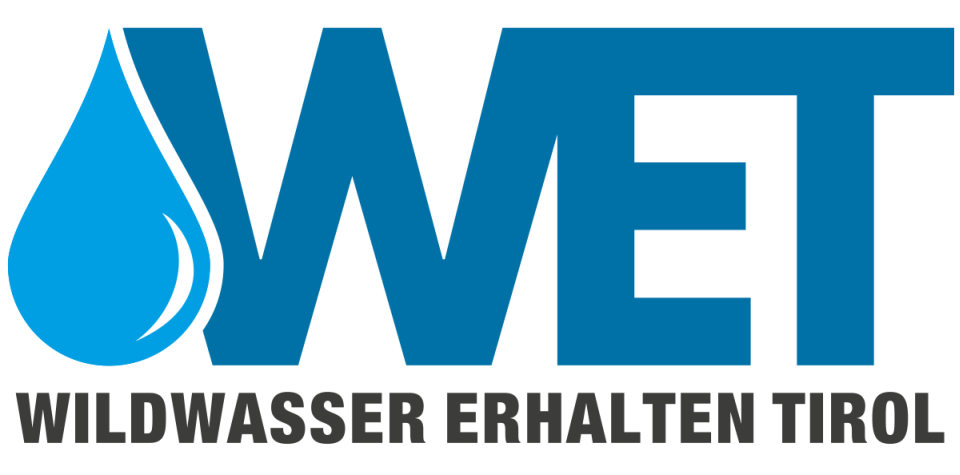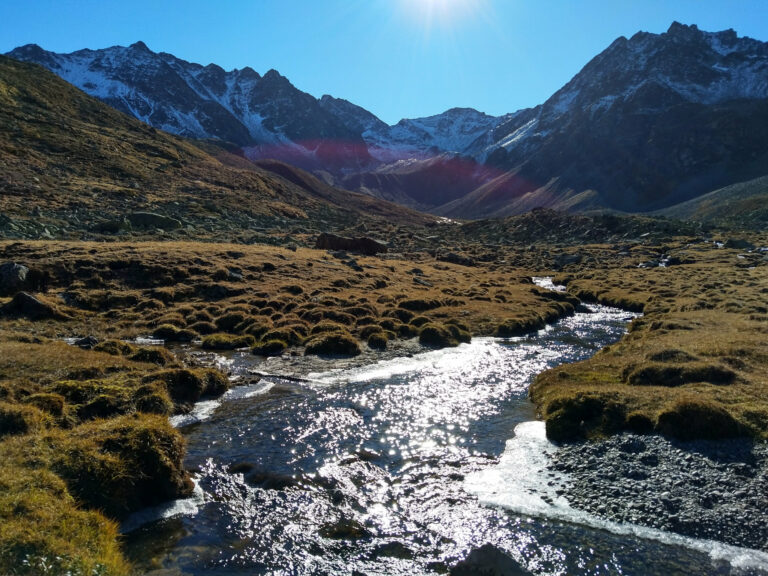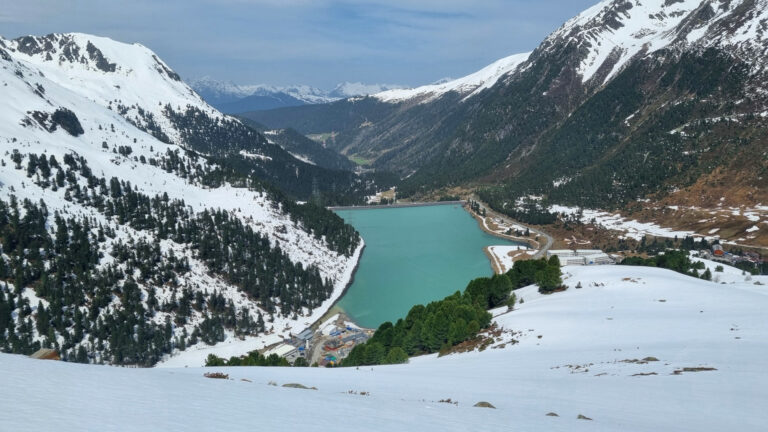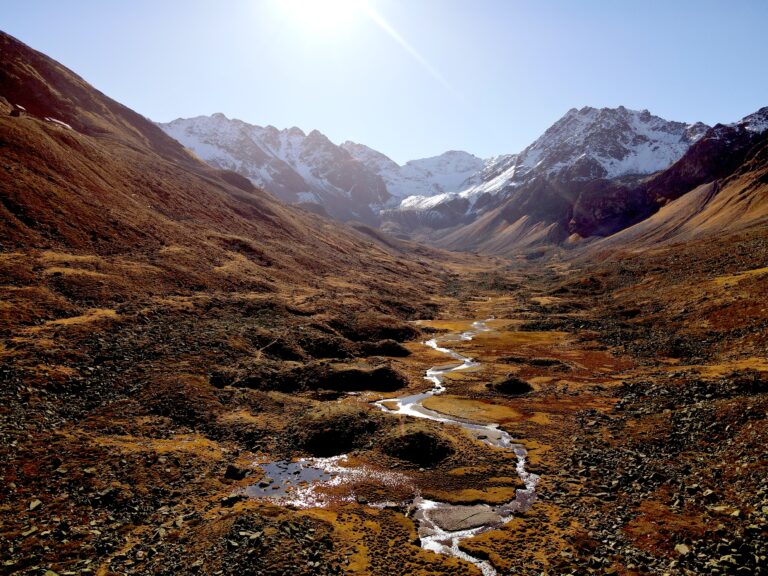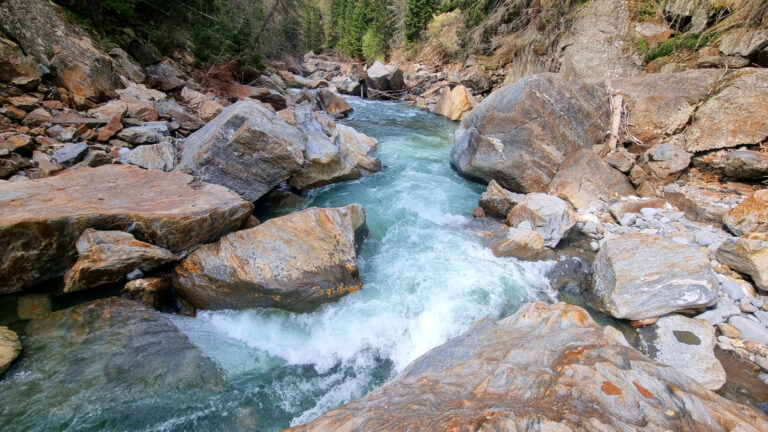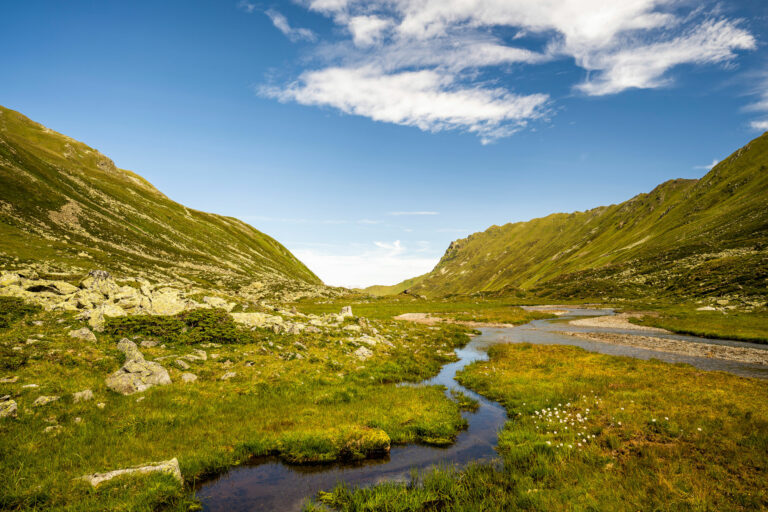Expansion doesn’t mean savings
In 2023, the world reached, for the first time, an annual average temperature approximately 1.5°C higher than in pre-industrial times (6). It is evident that there is an urgent need to drastically reduce greenhouse gas emissions. Tirol continues to heavily rely on hydropower for implementing its energy strategy, with the expansion of the Kaunertal power plant being a central point in the state’s climate strategy (11, p.31).
TIWAG argues that the expansion of hydropower is necessary to achieve the energy transition, with the idea that renewable electricity should replace fossil fuels. For example, the expansion of the Kaunertal power plant is expected to “save 300,000 tons of CO2 annually” (14).
However, as noted critically by the State Audit Office in 2023, the mere expansion of hydropower does not necessarily lead to a reduction in greenhouse gas emissions ((10), p. 25). And that’s the crux of the matter – we need to emit less CO2. So, what’s the status of Tirol’s climate goals?
Climate Goals of the EU and Tirol
The EU’s climate goals aim for the EU to become “climate-neutral” by 2050, meaning net zero greenhouse gas emissions (1). The current interim target is to reduce greenhouse gas emissions by at least 55% by 2030 compared to 1990 levels (2). TIWAG justifies its expansion of hydropower by referencing the Tyrolean climate goals, which are derived from those of the EU. They are:
- By 2050: “Energy autonomy” – Tirol aims to meet its energy demand net from renewable sources (the primary goal of CO2 reduction is indirectly included here). For this purpose, Tirol’s energy demand is to be reduced by 37% by 2050 compared to 2016 levels (3), and electricity generation from renewable energy sources is to be roughly doubled.
In 2017, the energy saving target was still “-50% by 2050 compared to 2005” (4, p.16, Fig. 4), but by 2018, it had been changed to “-37% compared to 2016” (5, p. 9). However, Tirol’s energy demand remained unchanged between 2005 and 2016 – so the savings target was reduced. - By 2020: The first interim goal of the Energy Strategy 2050 was to stabilize energy consumption at the level of 2005 and reduce greenhouse gas emissions by 16% (7, p. 43).
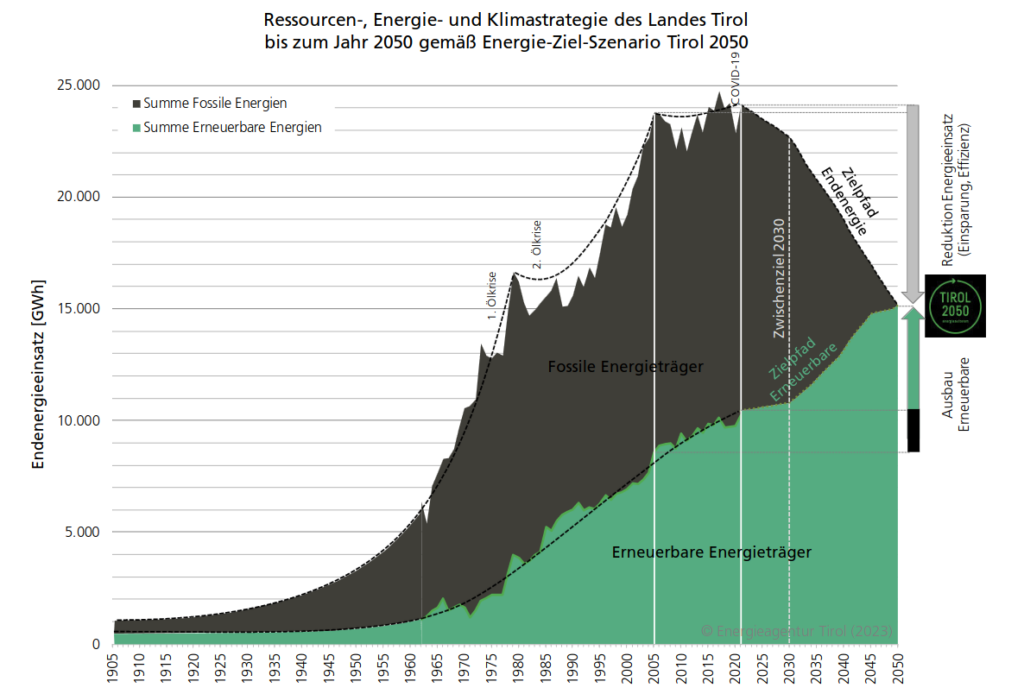
The two pillars of the Tyrolean Energy Strategy 2050 are:
- Expansion of renewable energy generation, aiming to double by 2050. In particular, there is a decision by the Tyrolean regional government from 2011, stating that hydropower should be expanded by 2.8 terawatt-hours (TWh) of annual generation between 2011 and 2036 (12, p. 25).
The 37% energy savings by 2050 translate to the following reductions in energy use for each sector: building sector minus 31%, production sector minus 7%, and mobility sector minus 65% in final energy consumption by 2050.
Energy Production in Tyrol
In 2021, Tyrol generated almost 13 TWh of energy. Hydropower accounted for exactly 50% of this (11, p. 86). In terms of electricity production, hydropower contributes to approximately 95% of Tyrol’s total (13). Over the past years, energy production in Tyrol has increased overall, as shown in the following figure. In total, nearly 48% of Tyrol’s total energy consumption is covered by renewables, placing Tyrol significantly above the Austrian average (9, p. 52).
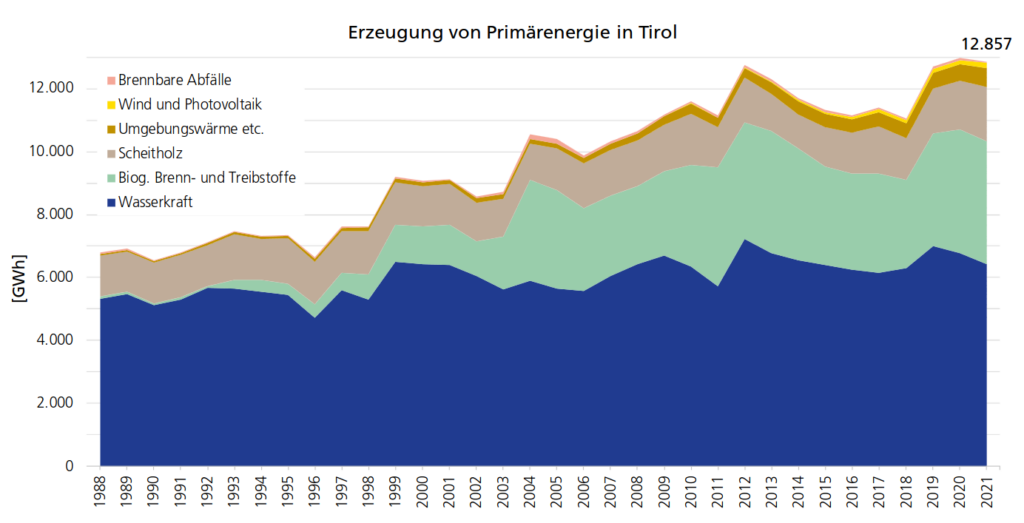
Energy Monitoring Report 2022
Saving Energy?
Once a year, the responsible regional agency evaluates where Tyrol stands on its target path. The Energy Monitoring Report 2022 (11) was published in autumn 2023. The central statement is:
“The final energy demand of Tyrol in 2021 was 24,162 GWh, which was 5.6% higher than the previous year and 1.4% higher than the value of the reference year 2005.”
(11, p. 12)
This means that although Tyrol originally aimed to stabilize its energy demand by 2020 compared to 2005, it is increasing. Moreover, it’s rising again because between 2005 and 2010, it had initially decreased but has been steadily increasing since then. In 2016, Tyrol’s energy consumption had returned to the 2005 level.
The energy demand is also divided into the 3 sectors of Buildings, Mobility, and Production in the monitoring. The sector with the highest consumption in 2021 is Buildings, accounting for approximately 46%, followed by Mobility with around 33%, and Production with 21%. The evaluation of the development of these three sectors revealed:
- Production: Between 2005 and 2021, the energy demand decreased by 22.4%. Therefore, this sector currently exceeds the goals, as the target by 2050 is -7%.
- Mobility: Between 2005 and 2021, the demand decreased by 1.8%. However, the target is -65% by the year 2050.
- Buildings: “The final energy use in the buildings sector increased significantly to 11,158 GWh in 2021. Between 2005 and 2021, the demand in this area increased by 21.2% with a target value of -31% by the year 2050.” (11, p. 13)
Overall, it can be said that the efforts to save energy in Tyrol are not progressing as well as desired. And what about the second pillar of the strategy, the expansion?
Expand Renewables
Hydropower
In the Energy Monitoring Report 2022, it is stated regarding hydropower: “The expansion of hydropower is progressing. Between 2011 and 2023, the guaranteed capacity increased by 901 GWh/year to 7,580 GWh/year. In order to achieve the regional target of approximately 9,500 GWh/year by 2036, in addition to the hydropower projects under construction and those already known, further projects with a capacity of around 500 GWh need to be implemented.” (11, p. 12) Tyrol is still actively involved in expanding hydropower. Interestingly, the plan until 2036 already includes the expansion of the Kaunertal power plant, as it was originally supposed to be under construction by now (8).
Photovoltaics
“The expansion of photovoltaic systems is progressing rapidly. The installed capacity in 2022 was 35% higher than the previous year – the estimated production in 2022 was around 220 GWh.” (11, p. 13). This sounds promising – but keep in mind that in 2021, photovoltaics contributed only about 2% to Tyrol’s electricity production (13).
Heat Pumps
“More and more heat pumps are being put into operation in Tyrol, […]. A rough estimate suggests a total number of around 18,300 units with an average output of 19,700 kWh/year each.” (11, p. 13).
Biogas
“After the cessation of electricity production in two plants, currently, seven biogas plants with gas utilization in a CHP unit are still in operation.” (11, p. 13). So, this has recently been declining.
Fossil Fuels
Regarding gas consumption, the report states: “The demand for natural gas has been increasing significantly throughout the entire statistical series. In 2021, 4,018 GWh of natural gas were imported. […] The natural gas network was expanded by approximately 36 km in 2022 to the current total of 4,218 km.” (11, p. 13).
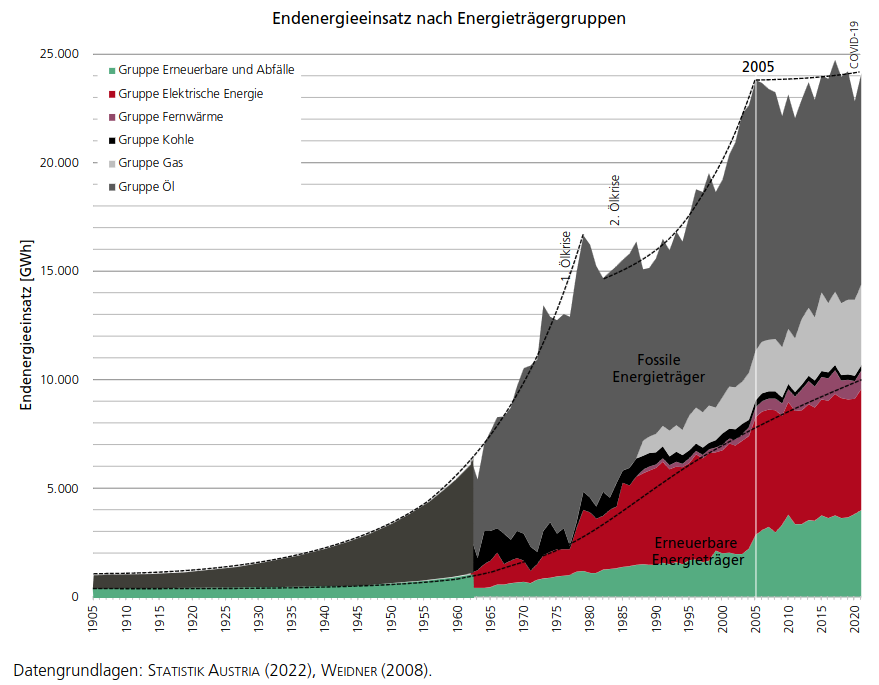
Greenhouse Gas Accounting
Between 1990 and 2020, Tyrol saw a 5.1% increase in greenhouse gas emissions, reaching 4.4 million tonnes of CO2 equivalent (11, p. 113). Consequently, Tyrol is now farther from the EU target of reducing greenhouse gas emissions by 55% by 2030 (compared to 1990) than ever before.
Conclusion
Despite being able to cover nearly half of its energy consumption with renewables, Tyrol finds itself falling short of EU climate goals. It generates 100% of its electricity from renewable sources and has maintained a stable surplus of around 10% for over a decade. However, despite its concerted efforts to expand renewables, primarily focusing on hydropower, greenhouse gas emissions have been increasing for the past 30 years, contrary to the required decrease to achieve the 55% reduction target by 2030.
The gigawatt-hours produced from renewables do not replace fossil fuels but rather add to overall consumption. Therefore, the argument put forth by TIWAG that expanding hydropower is necessary for Tyrol to meet its climate goals appears disingenuous. Instead, there is a pressing need to prioritize energy-saving measures.
Sources & Links
- (1) https://climate.ec.europa.eu/eu-action/climate-strategies-targets/2050-long-term-strategy_en
- (2) https://climate.ec.europa.eu/eu-action/european-climate-law_en
- (3) https://www.tirol2050.at/unser-ziel/szenarien/
- (4) https://www.tirol.gv.at/fileadmin/themen/umwelt/wasser_wasserrecht/Downloads/19-03-25_ENERGIEMONITORING-2017.pdf
- (5) https://www.tirol.gv.at/fileadmin/themen/umwelt/wasser_wasserrecht/Downloads/19-12-18_ENERGIEMONITORING-2018.pdf
- (6) https://wmo.int/media/news/wmo-confirms-2023-smashes-global-temperature-record
- (7) https://www.global2000.at/sites/global/files/Klima-Bundeslaender-Report-2020.pdf
- (8) https://www.tt.com/artikel/9513439/vwgh-schmetterte-tiwag-revision-rund-um-kraftwerk-kaunertal-ab
- (9) file:///home/marieke/Downloads/BMK_Energie_in_OE2023_barrierefrei-3.pdf
- (10) https://www.tirol.gv.at/fileadmin/landtag/landesrechnungshof/downloads/berichte/2022/Klimaschutz-_und_Klimawandelanpassungsstrategie.pdf
- (11) https://www.tirol.gv.at/fileadmin/buergerservice/kundmachungen/wasserrecht/2023/23-10-30_ENERGIEMONITORING-2022-FINAL-MIT-FLUSSBILDERN.pdf
- (12) https://www.uibk.ac.at/bauphysik/forschung/projects/tirol2050/21-08-27_bericht-szenarien-2050-und-2040-final.pdf
- (13) https://www.tiroler-umweltanwaltschaft.gv.at/naturschutz/positionen/tiroler-fliessgewaesser-unter-strom/
- (14) https://www.tiwag.at/unternehmen/unsere-kraftwerke/ausbauvorhaben/ausbau-kaunertal/
